The Joint Ocean Ice Studies (JOIS) 2017 expedition has a plan. Actually there are lots of individual plans but they all have to be carefully coordinated and choreographed so that there is as much efficiency as possible built into the system. That responsibility falls to Bill Williams. He is a leader and the guru of the JOIS 2017 expedition.
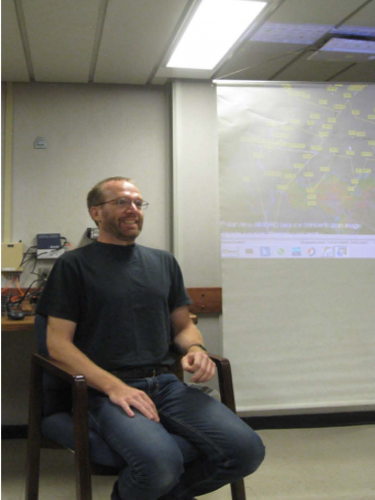
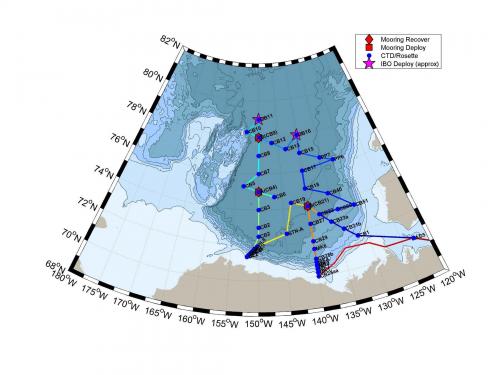
The great thing about having a plan is it can always be changed. We are in the middle of some fairly rough seas. I woke up at about 2 am last night realizing I was doing a lot of rolling around. I opted for the rowing machine this morning rather than the treadmill because I figured staying seated in these conditions would be easier than trying to keep my feet under me. I did not want to start the day getting shot off the back end of the treadmill. So long story short rough seas means there is a change in plan.

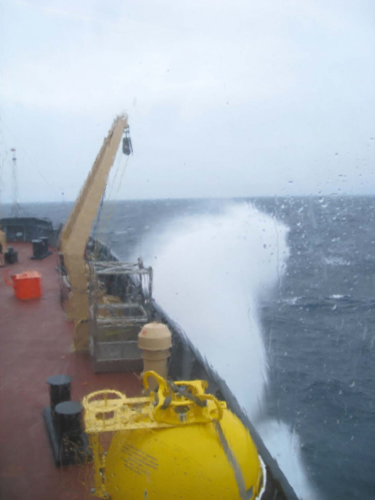
The first CTDA research tool that is submerged in the water to measure conductivity (salinity), temperature, and depth. cast (AG5 on the map) has been postponed until later and we are headed for the next station (CB1 on the map) by way of Cape Bathurst where release of surface drifters will take place. Surface drifters are designed to track top layer ocean currents with the use of a GPSA Global Positioning System (GPS) is a satellite-based navigation system used to track the location or position of objects on the Earth’s surface. transmitter.
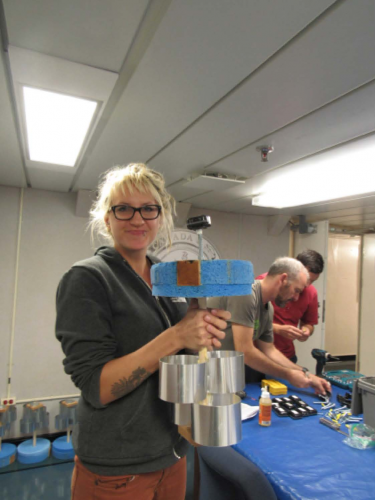
The scientific plan of this work remains without change: we have to better understand how the Beaufort GyreA spiral oceanic surface current driven by the wind. climate system (Photos 6 & 7) works. Each element of this system has its own spatial and temporal variability and all elements are closely interconnected. The major goal of this project is to understand these relationships and predict future changes. Different groups of the expedition solve different tasks for each system element and at the same time their work is coordinated to solve numerous scientific problems and questions formulated in the project plan.
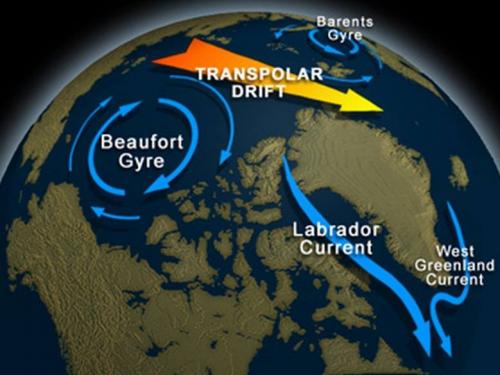
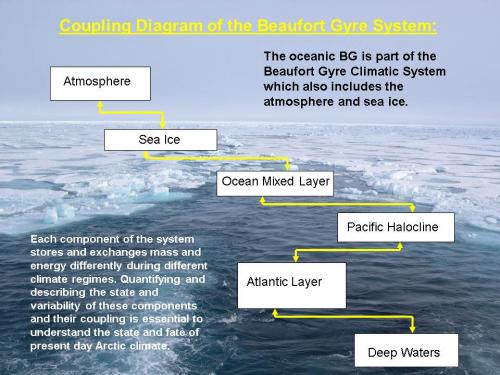
Why is there so much attention paid by researches to this region since 2002?
First, climatologically – the Beaufort GyreA spiral oceanic surface current driven by the wind. is known as a unique sea ice and water circulation component of the Arctic Ocean (Photo 7) rotating clockwise under influence of prevailing winds. These winds act as a giant pump collecting low salinity water from the Arctic Ocean surface layer in the BG center. Greater than half of the total Arctic Ocean’s fresh water (45,000 km3) is stored in the Canada Basin with its Beaufort GyreA spiral oceanic surface current driven by the wind. which contains about 23,000 km3 of fresh water. This volume is practically identical to the volume of water in Lake Baikal, or is comparable with volume of all Great Lakes. It would take five years for all Arctic rivers to fill the BG reservoir with its observed fresh water volume.
Secondly, the fresh water release from the Beaufort GyreA spiral oceanic surface current driven by the wind. region can cool down the climate of the Northern Hemisphere. To learn more about this, watch the following video: Fresh Water in the Arctic


Comments